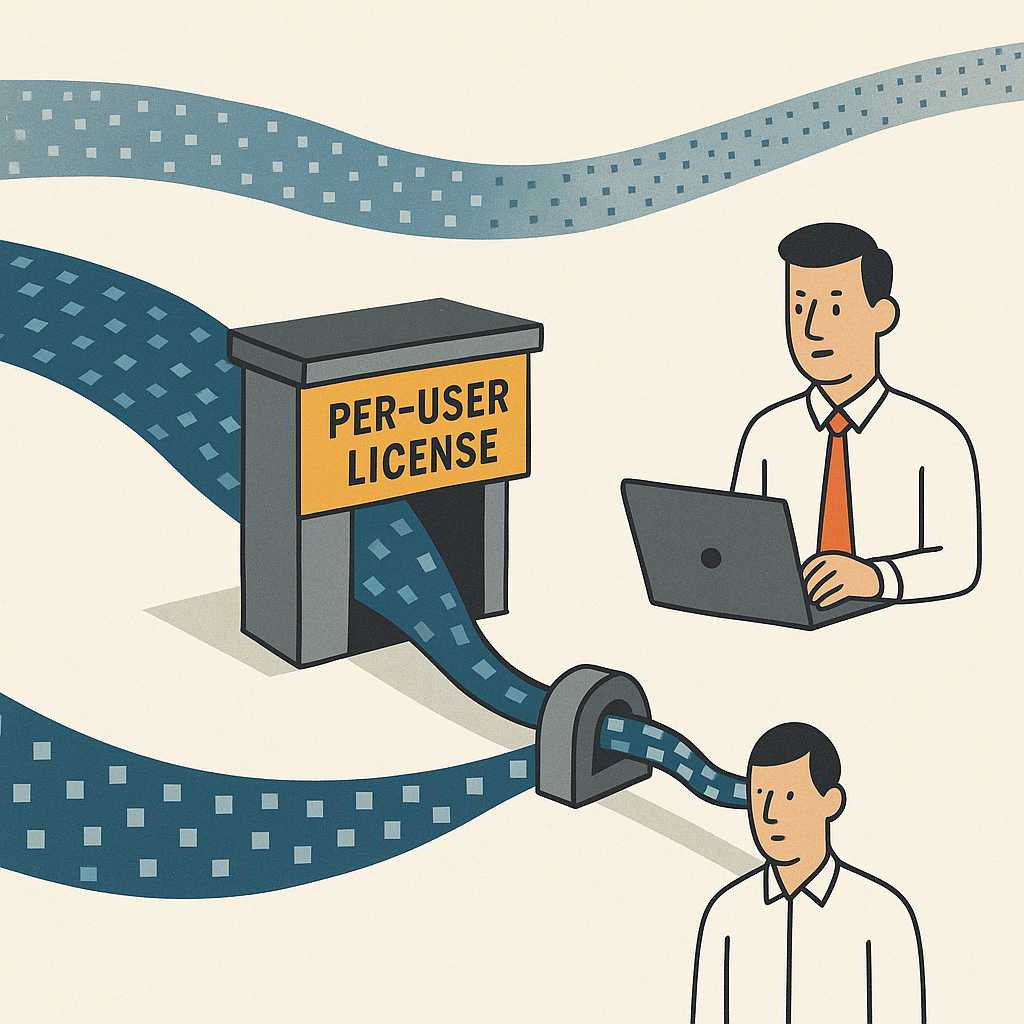
Table of Contents
When leaders evaluate a new ERP system, they zero in on features, implementation timelines, and upfront costs. A perspective forged through years of navigating enterprise integrations suggests this is a critical oversight. They rarely give enough thought to one of the most strategic elements of the deal: the licensing model. Your ERP’s licensing model isn’t just a line item; it’s a hidden tax on your data culture.
The Hidden Tax of Per-User Licensing
The traditional per-user licensing model, a fixture for decades, corners organizations into making poor choices. Do you buy a license for the project manager who only needs to view profitability reports once a week? What about the sales executive who just needs to check an order status? Too often, the answer is a hard no. This approach forces companies to ration access to their own data, creating information bottlenecks and reinforcing the damaging idea that the ERP is a tool exclusively for the finance team.
This model actively undermines the goal of creating a data-driven organization. It practically encourages teams to export data to spreadsheets and other shadow IT systems, not because they want to, but because they don’t have a license to access the information directly. How can you build a culture of transparency when the system itself puts a price on every login?
The Shift to Consumption-Based Access
Fortunately, a different philosophy is emerging, exemplified by platforms like Acumatica. The consumption-based model licenses the system based on the computing resources you use, not the number of people who log in. This shift in approach fundamentally alters the dynamic of data access. It’s not just a new pricing scheme; it’s an entirely different way of thinking about who owns the data.
The strategic implications of this are significant:
- True Data Democratization. When the cost of adding another user is zero, there’s no longer a financial reason to deny access. A project manager, a warehouse supervisor, or a field service technician can all get a login to see the information relevant to their roles. The ERP finally transforms from a siloed financial tool into a true information backbone for the entire business.
- Reduced Operational Friction. This model kills the endless “Can you pull a report for me?” requests that bog down a finance team. It empowers employees with self-service access to the data they need, right when they need it. The efficiency gains aren’t just theoretical; they’re felt in the day-to-day grind.
- A More Honest TCO. The Total Cost of Ownership for a per-user system is often wildly understated. It doesn’t account for the “soft costs” of poor decisions made with incomplete information or the time wasted by employees waiting for a licensed gatekeeper to hand over the data. A consumption model brings these hidden costs into the light.
An Operating Philosophy, Not Just a Tool
Choosing an ERP is no longer just about its features. It’s about choosing an operating philosophy for your entire organization. Are you buying a restricted tool for a select few, or are you investing in an information platform for everyone? The former is a tax on your data; the latter is an investment in your collective intelligence.
For more discussion on ERP strategy, please connect with me on LinkedIn.